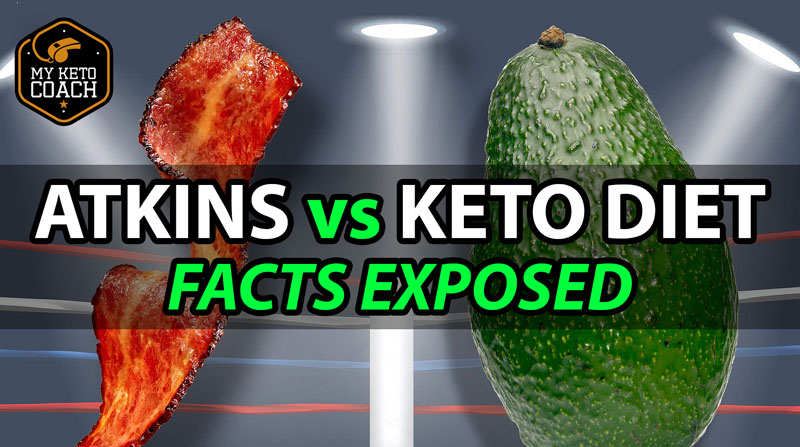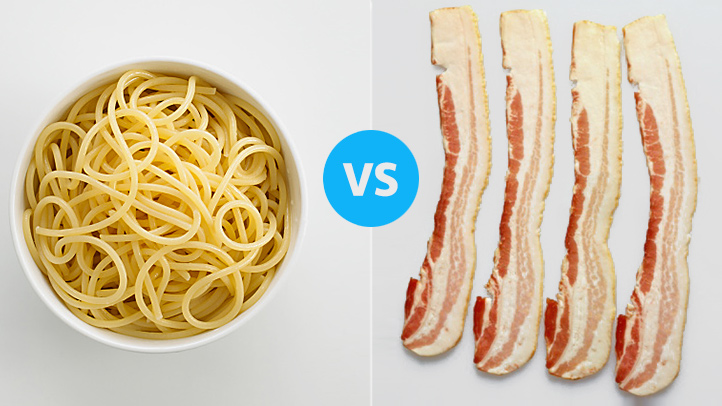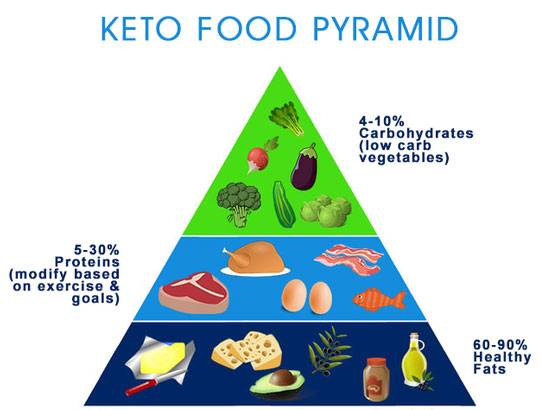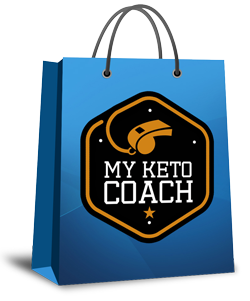
Atkins vs Keto Diet – What is the Right Diet For You!
If you are asking yourself “atkins vs keto diet – which is better?” you are not alone. This is a common question to those keen on starting a low-carb lifestyle, as many confuse the two diets as the same.
This article will compare the two popular diets head-to-head to see their similarities and differences, benefits and drawbacks, and which may be right for you.
Carbohydrates versus Fat
The debate between carbohydrate-based or fat-based diets and which is superior for health has been ongoing for decades.
Even after the coining of the term ‘ketogenic’ in the 1920s1, eating a high-fat diet, especially saturated fats, was believed to be the culprit of many health conditions. Among the reported bad side effects of a high fat diet were high cholesterol, weight gain, and deemed unsustainable for long periods of time.

Today, the spotlight has shifted away from the slander that ‘fat’ is the key player in causing health concerns. The focus has been directed towards the trend of excess sugar consumption having more negative impact.
This comes after many scientific studies have emerged comparing high-fat and low-fat diets and the positive outcomes across various groups in favor of the high-fat diets2. This is where the great Atkins vs Keto Diet debate began.
What is the Atkins Diet?
Since the introduction of the Atkins Diet in 1972 from the best-selling book by Dr. Robert C. Atkins, the once demonized low-carb lifestyle breathed new life as studies and real-life results of the diet captured the attention of the Western world.

Dr. Richard C. Atkins was a nutritionist and an American cardiologist who was inspired by emerging research in the 1950s on low-carb diets and published findings in the Journal of the American Medical Society.
This lead him to develop his take on executing a well-plotted out low-carb diet. Although his book was written in the 1970’s, his diet gained more awareness and notoriety in the 1990’s and 2000’s. In fact, Time Magazine listed Atkins as one of the ten most influential people in 20023.
The principles behind the Atkins diet are based with the primary focus on weight loss. To get started, the diet is executed in a 4-phase plan.
Phase 1: Induction of Atkins Diet
In this phase, the goal is to kick start ketosis in the body.
Ketosis is the process in which your body utilizes fat for fuel, versus converting carbohydrates into glucose as energy. It’s achieved by breaking down stored body fat or fats consumed nutritionally into ketones in the liver.
The ketones take over as your primary energy source once all the glucose is depleted. As the body cannot produce high levels of glucose on its own without nutritional supplementation, the stored glycogen in your muscles and liver will only be present in the body for up to 24 hours.
In order to achieve ketosis in phase 1 of the Atkins diet, you must consume under 20 grams of carbohydrates per day. The carbohydrates are mainly from low-carb vegetables for a period of two weeks. You eliminate all grains, starches, legumes, low-fat dairy, diet foods and any processed products.
During that time, you can must increase your fat and protein intake to counter the carbohydrates that are missing from your daily intake.
GOAL: Ketosis, trigger weightloss
DURATION: 2 weeks
CARB CONSUMPTION: Under 20g of carbohydrates
SOURCE OF CARBS: Low-Carb vegetables, such as leafy greens and cruciferous vegetables
OTHER MACROS: Emphasis on high fat and high protein
Phase 2: Balancing (‘Ongoing Weight Loss Phase’)
Once induction phase has ended, the process of re-introducing small quantities of approved carbohydrates begins. This includes the addition of more nuts and seeds, increasing intake of low to moderate carb vegetables and a modest amount of fruit.
Phase 2 is about optimizing the strict work that you put into phase 1 by continuing to emphasize high fat and high protein consumption. You will be elevating your carbohydrates to roughly 25-50 grams of your daily caloric intake.
To achieve this number, you can begin by increasing your carbohydrate intake by approximately 5 grams daily for a period of 2 weeks. This is to gradually identify your body’s tolerance to carbohydrates without compromising your weight loss or health benefits.
Phase 3: Pre-Maintenance Phase of Atkins Diet
After the initial 4 weeks, your body should be fairly adapted to utilizing fat for fuel and you’ve begun to create a new carb tolerance to which you can continue to thrive.
It’s at this stage when starchy vegetables, whole grain foods and more fruit can be re-introduced.
You will bolster carbohydrate intake by another 10 grams weekly for an additional two weeks. This should be closely monitored with weight gain to ensure you are not hindering your results. Typically, the total grams of carbohydrates in this phase is between 50 to 80g.
Phase 4: Maintenance Phase of Atkins (‘Lifetime Maintenance Phase’)
By now, it’s expected to have achieved your weight loss goals. The focus shifts to maintaining this newfound compliance to optimize your outcome.
The multi-phase approach is derived to allow you to gain clarity on your intake of food sources and tolerance to carbohydrates. It allows you to slowly add in specific amounts of starchy vegetables, legumes, fruit, beverages and even some grains.
By the end, the goal is to have an understanding of your macronutrient profile while still being conscious of eliminating refined sugars and staying within your limits4.
The evolution and refinement of the first Atkins Diet has made a lot of headway with other variations to suit individual goals and needs.
What is the Keto Diet?
Unlike Atkins, the model of the traditional ketogenic diet is one phase. While there is a transition period to achieve ketosis, it does not follow a per week guideline that includes subtracting and re-adding carbohydrates.

The ketogenic diet is centric on the belief that it is a way of eating that can be maintained for life, with ongoing tweaking of the macronutrient profile over time to fit individual goals and body composition.
The traditional ketogenic diet (TKD) is comprised of a low-carb, moderate protein and high-fat model.
These ratios may vary, but the standard rule of thumb to achieve ketosis is 70-80% of your daily caloric intake stemming from fat, 20-25% from protein sources, and the remaining 5-10% from allowed carbohydrates.
With the ketogenic diet, NET carbs play a vital role. Net carbs refer to the total grams of carbohydrates deducting the fiber content. In some food options, you can also subtract the natural sugar alcohols such as Stevia, monk fruit or erythritol.
For example, if you had a food item listed at a total of 10 grams of carbs, but the fiber equaled 7 grams, the total net carbs for that food would be tracked as 3 grams net carbs.
Based on the traditional model above, you would likely stay between 20 to 30 grams net carbs to achieve and maintain ketosis.
The ketogenic diet has been linked to sustainable fatloss while preserving lean muscle mass. It is known for promoting lowering triglycerides and stabilizing blood glucose, while increasing insulin sensitivity.
From a brain health standpoint, cognitive function and prevention of the onset of cognitive related diseases has been observed5.
Atkins vs Keto Diet – Similarities and Differences
ATKINS
Model: 4 phases: induction, balancing, pre-maintenance and maintenance
Macronutrient Breakdown: No cap on fat or protein.
Carb Intake:
Induction | 20g
Balance | 25-50g
Pre-Maintenance | 50-80g
Maintenance | Under 100g
Duration of Diet: Induction, Balance & Pre-Maintenance: 2 week intervals. Maintenance: lifetime to follow
Duration of Ketosis: Ketosis will be achieved for first 2-4 weeks only
Carbs to Avoid: Induction phase: Grains, bread, pasta, rice, starches, high-sugar fruit, legumes, sugar, processed foods, low-fat dairy or diet foods
Carbs Permitted: Same as keto for induction phase (2 weeks)
Pre-maintenance/Maintenance: starchy vegetables (including sweet potato, squashes, root vegetables), legumes, fruit, some grains like quinoa/ancient grain & rice
KETO
Model: 1 phase: ongoing high-fat, moderate protein, low-carb way of eating
Macronutrient Breakdown: 70-80% fat, 20-25% protein, 5-10% carbs
Traditional Keto Diet follows 20-30g net carb intake daily
Duration of Diet: Ongoing/Lifetime
Duration of Ketosis: Ketosis will be maintained throughout ketogenic diet
Carbs to Avoid: Grains, bread, pasta, rice, starches, high-sugar fruit, legumes, sugar, processed foods, low-fat dairy or diet foods
Carbs Permitted: Low-carb vegetables and fruit (in moderation), nuts, dark chocolate and cacao. No reintroduction of non-approved carbohydrates
Pros & Cons of Each
If you are still thinking “Atkins vs Keto Diet” this pro’s and con’s list should help.
While both the Atkins Diet and the Keto Diet have parallels, when it comes to long lasting benefits the Keto Diet is the clear winner. Let’s explore the major motivations, and the successes and setbacks observed in each.
Sustainable Weight loss
ATKINS – It is reported that weight loss will occur primarily within the first 6-12 months, but may begin to taper off. The slow weightloss or weight gain can be attributed to reintroducing carbohydrates that can kick you out of ketosis.
Furthermore, adding back carbs can trigger hunger hormones, raise blood sugar level and hinder insulin sensitivity which may attribute to the weight gain.
When transitioning out of phase three of Atkins, it’s important to know your own carbohydrate tolerance and stay within your limits.
KETO – The ketogenic lifestyle is intended to be effective at ongoing FAT loss versus weight loss. Ketones are inherently muscle sparing, so as you lose fat, you retain your lean muscle mass which is important for metabolism.
The presence of ketones can promote hormonal balance to curb cravings, level out blood sugars and increase insulin sensitivity.
Fat loss results can be ongoing if ketosis is maintained. With adherence, you can achieve fat-adaptation which means your body will prefer ketones to glucose as your energy source first.
Reducing Cravings & Balancing blood sugars
By eliminating insulin spiking, high-carb foods to get your body into ketosis, an intrinsic benefit is boosting insulin sensitivity. This means you do not need as much insulin in your diet to regulate blood sugar levels.
Hormones are largely regulated by fats, therefore with the bump in fat intake plus the reduction in sugar, it will have a noticeable impact on diminishing hunger.
ATKINS – Phase 1 through 3 of Atkins promotes very low-carb, high-fat intake thus getting in and likely staying in ketosis. You will begin to reap the positive blood sugar stabilizing effects.
However, once you have reached phase 4 and increased your carbohydrate intake beyond sustaining ketosis, you may observe increase in hunger if you do not carefully track your sources of carbs and daily intake.
KETO – As the basis of ketogenic diet is to get in and stay in ketosis, you will experience ongoing balancing of blood sugars and even improve other markers related to diabetes such as triglyceride levels.
Once fat adaptation has been achieved, typically after four to six weeks of strict ketogenic adherence, the hunger hormones are reduced drastically leading to curbing cravings and easier compliance.
Sticking to the Diet
ATKINS – Having a clear cut outline in two week intervals may be appealing to those who find it daunting to stick to a way of eating long term. That being said, the principles of Atkins are to extend beyond the first 6 weeks (phases 1-3) and practice the low-carb model once you’ve established your own carb tolerance.
Where the problems arise is that there is no cap on protein or fat consumption on Atkins, and knowing your own carbohydrate tolerance without triggering recurring issues leads many to fall off in the long term.
Atkins is therefore better suited for those with short term weightloss goals and who are self-motivated to be able to track and be diligent with their food consistently.
KETO – While the idea of staying in ketosis for an indefinite period may seem unsustainable, research indicates otherwise. The bulk of the longterm results occur once fat-adapted, allowing for the presence of ketones to become apparent.
Aside from initial fatloss, ketones help with providing endured energy, increased mental clarity and cognitive signaling, improved health markers, reduce inflammatory responses and more9.
Furthermore, as the standard ketogenic model has a baseline to get started with, tracking your macronutrients can be consistent, without having to do guesswork on your protein, fat, and carb intake.
Many people find that once they have reached fat adaptation, sugar cravings are abolished and the gains they experience motivate them to stay the course for continual success.
In Conclusion of the great debate of Atkins vs Keto Diet…
Now that you have reviewed the diets, where do you begin? Personally I think a Keto Diet (ketogenic) way of life is the best, as a long term solution. For me the debate of which is better Atkins vs Keto Diet is solved.
But this is a personal choice at the end of the day. The best diet will be the one you stick with.
Sources:
- Masood W, Uppaluri KR. Ketogenic Diet. [Updated 2019 Mar 21]. In: StatPearls [Internet]. Treasure Island (FL): StatPearls Publishing; 2019 Jan-. Available from: https://www.ncbi.nlm.nih.gov/books/NBK499830/
- Gunnars, K. (2017, June 22). 23 Studies on Low-Carb and Low-Fat Diets – Time to Retire The Fad. Retrieved from https://www.healthline.com/nutrition/23-studies-on-low-carb-and-low-fat-diets
- Levy, J. (2019, May 3). Pros & Cons of This Weight Loss Diet Plan. Retrieved from https://draxe.com/diets/atkins-diet/
- Gunnars, K. (2018, August 2). The Atkins Diet: Everything You Need to Know. Retrieved from https://www.healthline.com/nutrition/atkins-diet-101
- Antonio Paoli. Int J Environ Res Public Health. 2014 Feb; 11(2): 2092–2107. Ketogenic Diet for Obesity: Friend or Foe? Published online 2014 Feb 19. doi: 10.3390/ijerph110202092 PMCID: PMC3945587
- Manninen AH (2006) Very-low-carbohydrate diets and preservation of muscle mass. Nutrition & metabolism 3: 9. Retrieved from https://www.ncbi.nlm.nih.gov/pmc/articles/PMC1373635/
- Gibson, A. A., Seimon, R. V., Lee, C. M., Ayre, J. , Franklin, J. , Markovic, T. P., Caterson, I. D. and Sainsbury, A. (2015), Do ketogenic diets really suppress appetite?. Obes Rev, 16: 64-76. doi:1111/obr.12230
- Last, A. R., & Wilson, S. F. (2006, June 1). Low-Carbohydrate Diets. Retrieved from https://www.aafp.org/afp/2006/0601/p1942.html
- {n.d.). Occupy Health. Retrieved from http://occupyhealth.com/dr-susan-on-radio/dominic-dagostino-phd-health-benefits-of-the-ketogenic-diet/




